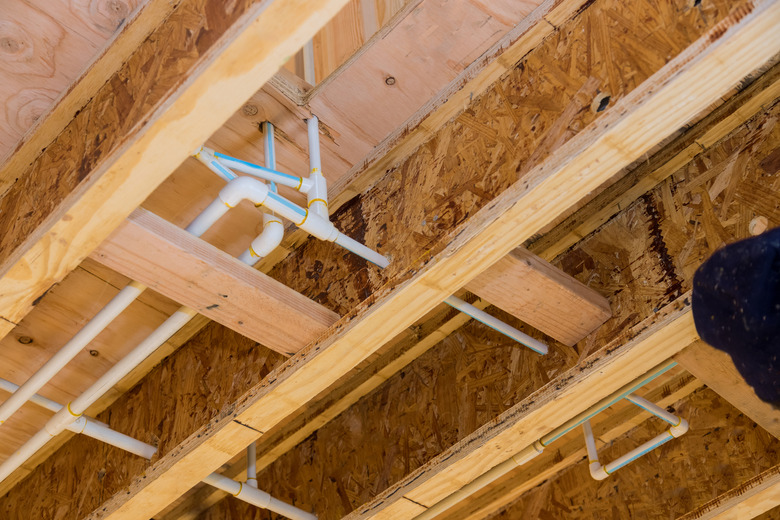Rough Plumbing Vs. Finish Plumbing
We may receive a commission on purchases made from links.
During new construction, a home goes through rough plumbing and finish plumbing stages. Rough plumbing comes first and involves installing all of the plumbing pipes and lines. Finish plumbing is the second phase and involves the parts of the plumbing system that you see inside your home.
Relationship to Other Trades
Relationship to Other Trades
As with all construction trades, plumbing tasks fit into the broad categories of rough work and finish work. Construction professionals describe projects as progressing in phases, and plumbing's rough and finish phases loosely coincide with the rough and finish phases of other trades, such as carpentry and electrical. For example, a carpenter's framing remains exposed during the rough carpentry phase, allowing other trades to complete rough phases by routing components through the wall's cavities. Whether you're working on a plumbing project or supervising plumbers, an understanding of the plumber's timeline allows you to follow and understand standard practices.
Rough-In Plumbing Basics
Rough-In Plumbing Basics
Rough plumbing, commonly called the "rough-in" stage, generally consists of routing pipes through wall cavities, running vent stacks to the roof, and connecting drain lines and water supply lines to sewer systems, septic systems, or main water supply valves. However, many plumbers also participate in excavation and lay underground pipes that run from utility connections to a primary structure.
In a structure's interior, plumbers measure, mark, and lay out the pipe paths on framing materials and create access holes with power tools. For water supply systems, plumbers frequently install soldered copper pipes or PEX piping. For drain, waste, and vent systems, plumbers generally install plastic ABS pipe or cast iron pipe. After roughing in drain and water supply systems, plumbers seal the open pipes with caps and test the systems for leaks.
Finish Plumbing Basics
Finish Plumbing Basics
The term "finish plumbing" typically refers to work that occurs after interior finishing, such as drywall or plaster. During the finish plumbing phase, plumbers remove the caps on drain and water supply pipes and install undersink drain assemblies, water supply valves, and water supply lines. Additionally, plumbers connect drain and water supply lines to plumbing fixtures, such as sinks, toilets, and tubs. Other tasks performed during the finish phase include caulking and sealing around plumbing fixtures and testing new plumbing connections.
Rough-In Plumbing Tools and Materials
Rough-In Plumbing Tools and Materials
Plumbers use both hand tools and power tools to cut and join pipes during the rough-in stage. Plumbers commonly use a manual tubing cutter to cut copper pipes. Plumbers clean copper with wire brushes or a special sandpaper called emery cloth and solder copper with a cleaning compound called flux, a handheld torch, and solder.
To cut drain, waste, and vent lines, plumbers use chop saws or handheld hacksaws. Plumbers join plastic pipes with a gluelike solvent cement and typically join cast iron pipes with mechanical fittings. Routing and securing pipes within the house framing requires a variety of cutting and drilling tools, including reciprocating saws, power drills, and circular saws.
Finish Plumbing Tools and Materials
Finish Plumbing Tools and Materials
Many of the same tools used for rough plumbing also work for finish plumbing. However, finish plumbing also requires tools that twist and tighten drain assemblies, water supply components, and plumbing fixture parts. Common finish plumbing tools include various wrenches, such as box wrenches, pipe wrenches, and adjustable wrenches. Additionally, plumbers carry a comprehensive set of screwdrivers and other general-purpose tools to complete finish plumbing tasks.
